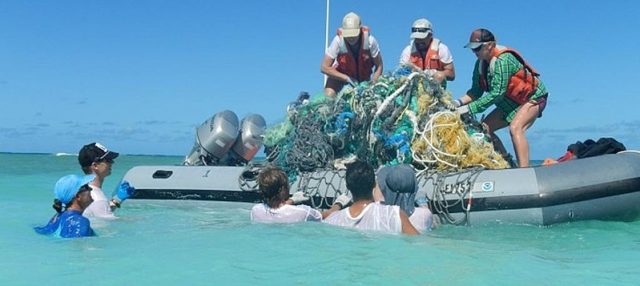This is part three of a three part series. Click here to read part one and click here for part two.
There are two key areas that must be addressed when it comes to plastic waste in the world’s oceans. The first is removal of plastic waste that has already entered the ocean and the second is stopping plastic waste leakage from land-based sources. Both pose significant challenges, but awareness is growing. Let’s start with the latter.
“People are becoming more aware about plastics. There usage is being reduced and it is now easier to recycle. But, especially in developing countries, they question remains, ‘Are we doing enough?’ We need to keep finding ways to reuse, recycle and recover plastics,” Dr. Vincent Aloysius, INSEE Ecocycle CEO says. “The goal is for no plastics to end up in the landfill. If landfills don’t contain plastics, a key source of leakage can be eliminated.”
Extracting refuse-derived fuel from landfills is one way to accomplish this, but more is needed. Everyone from the general public to large companies needs to play their part and contribute to solving this issue. Dr. Aloysius notes, plastic leakage isn’t a local or even a regional problem. It’s a global issue.
Earlier this year, nearly 30 companies teamed up to form the Alliance to End Plastic Waste. They have committed more than USD1 billion to help end plastic waste leakage through global waste management infrastructure development, innovation, education and other programs. This can help, but top-down policies don’t always prove to be effective in Southeast Asia.
According to Nina van Toulon, Initiator for the Indonesian Waste Platform, bottom-up initiatives started by the local people can be a more effective vehicle to stop plastic waste leakage from entering the ocean.
“The experience of waste management in Indonesia has taught us that top-down waste-management policies from the central government, and the lack of environmental education, are a bad combination that makes waste management efforts totally ineffective, especially in the remote rural areas of this vast country of islands,” Toulon told Thai media last year. “We also learnt from our campaigns that local communities have great potential to efficiently manage locally generated waste.”
Plastics in Asia only one part of the problem
Action to stop plastic waste leakage continues on land, but removing what’s already in the world’s oceans is proving more difficult. Efforts to eliminate the Great Pacific Garbage Patch, a massive concentration of 1.8 billion pieces of plastic debris that is twice the size of Texas, started last year, but the technology wasn’t up to the task.
The Ocean Cleanup group sent its Wilson device to the garbage patch last year, but it was forced to return to shore in April for repairs. It will take months to fix, but the organization hopes to correct the device’s flaws and restart cleanup efforts. Other cleanup up attempts are also in the pipeline, but we are still years away from efficient ocean plastic waste removal.
One thing to remember, plastic itself isn’t bad. For example, the medical industry has benefited immensely from plastics. Everything from medical devices such as heart valves to MRI machines and even IV bags are made from plastics. Food safety has also improved thanks in part to plastic.
“We shouldn’t demonize plastics. It is an important invention that has improved daily life. The goal isn’t to create a plastics-free world because it is a material that benefits society,” Dr. Aloysius says. “We must focus on responsible usage, thorough recycling and improved disposal techniques.”


































